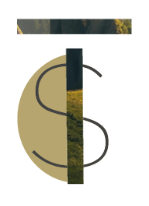How to Unlock your Futures Mindset?!
First published on LinkedIn on 27th November 2017: https://www.linkedin.com/pulse/step3-how-unlock-your-futures-mindset-tanja-schindler/
Last time, I’ve introduced CLA, the Foresight method by Sohail Inayatullah to analyze those worldviews. Today, we will focus on another framework that supports diverse thinking and steps aside from the general Foresight approach to discover our environment in a new way by using Foresight also to discover ourselves.
A New Framework of Environmental Scanning
The Integral Futures concept describes an approach where we not only uncover the system = external world we live and its social, technological, environmental, and political drivers of change but we also analyze our behavior and underlying mental models.
“It ain’t what you don’t know that gets you into trouble. It’s what you know for sure that just ain’t so.” — Mark Twain
Once we are too confident about what we think or how the future will develop we start to see only those signals that support our own beliefs while neglecting information that would prove us wrong. Therefore, foresight and especially the approach of Integral Futures enables organizations and individuals to understand our interior, exterior, individual and collective world preparing us for the uncertainty of the future. Richard Slaughter published an article about Integral Futures as a ‘New Approach for Environmental Scanning’ already in 1999 if you want to dive deeper into the topic.
In this article, I will focus on Ken Wilber’s basic framework of the four quadrants. Even with this approach, uncertainty won’t vanish completely but we can learn to manage it through exploring diverse pathways of the future. However, before we start exploring the future, we need to analyze how we currently think so we can start thinking differently.
Wilber’s Four Quadrants
Ken Wilber developed a meta-framework highlighting that besides the empirical analysis of our environment there is a deeper level of unlocking our futures thinking. This integral model describes people in a holistic context — both as individuals and within a collective. Wilber, therefore, analyzed how hundreds of researchers study their environment and discovered a pattern illustrated by his four-quadrant model:
The four quadrants are:
Upper-left: Intentional and represented by the ‘I’. This quadrant reflects our feelings, hopes, dreams, and intentions. It is what we think, believe and where our values are rooted.
Upper-right: Behavioral and represented by the ‘IT’. This quadrant describes our individual behavior, how we act and react due to our education, cultural background or intelligence.
Lower-left: Cultural and represented by the ‘WE’. This quadrant describes our culture, myths and social world. The stories and traditions we know because we grew up in this world.
Lower-right: Social (system) and represented by the ‘ITS’. This quadrant describes the system we live in and it is also where the well-known STEEP-Analysis is taking place.
Integral Futures, hence, offers a holistic approach where we first discover our own value and belief system and then identify and become aware of the consequences caused by our actions. Then, we analyze where our mental models are rooted — our myths, traditions, and bedtimes stories. Finally, we get to the exercise most Strategic Foresight Analysts jump to straight away — the environmental scanning of our external systems through frameworks such as STEEP or PESTEL (Social, Technological, Environmental, and Political drivers and factors).
Discover the futurist in you! –Tanja
Further Readings:
A new framework for environmental scanning by Richard A. Slaughter http://www.integralworld.net/slaughter2.html
Integral Theory and the Four Quadrants by Ken Wilber http://www.kenwilber.com/Writings/PDF/IntroductiontotheIntegralApproach_GENERAL_2005_NN.pdf
Reframing environmental scanning by Joseph Voros http://www.integralworld.net/voros.html


